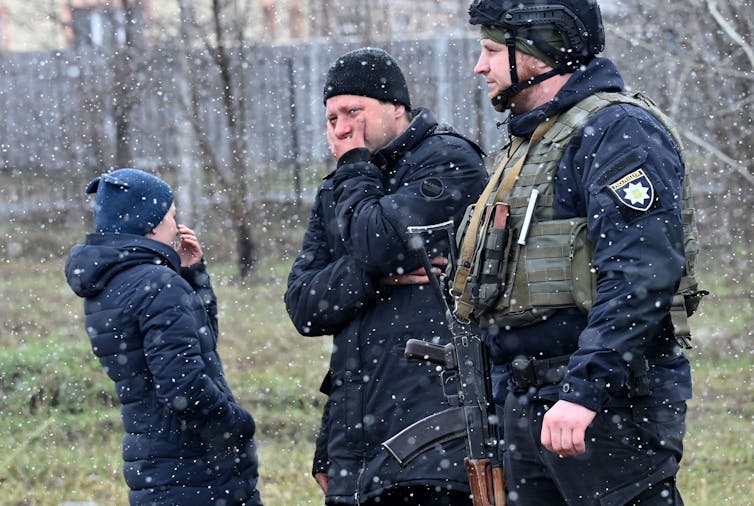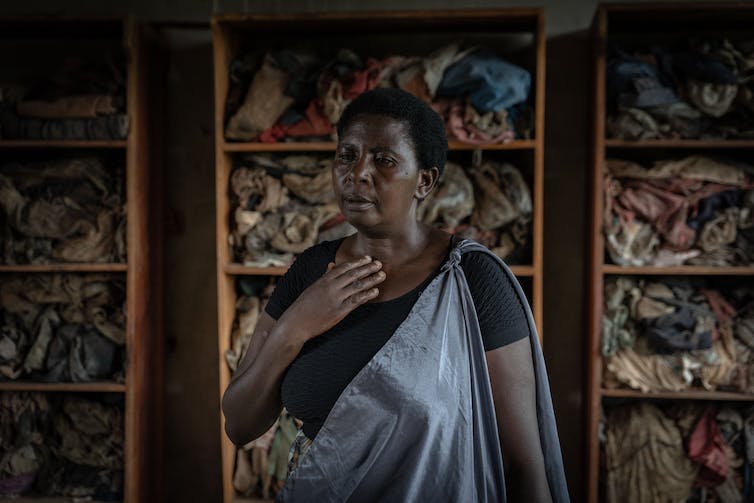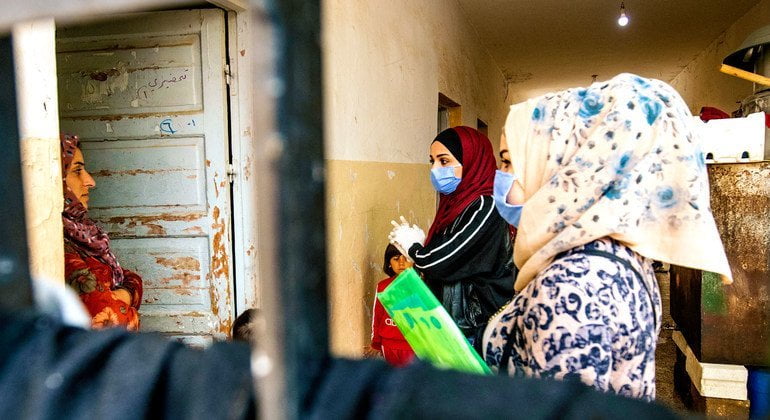Seventy-five years ago, in the wake of Nazi atrocities, the world made a vow.
Countries pledged to liberate humanity from the “odious scourge” of genocide when, at the United Nations, they established a new convention on preventing and punishing genocide on Dec. 9, 1948.
Has the international community lived up to this promise?
Amid genocide accusations and mass violence in the Middle East, Ukraine, Sudan, Yemen, Ethiopia, China and elsewhere, the answer would seem to be obvious: “No!”
But the reality is more complicated. It also offers a glimmer of light at a very dark moment.
As someone who has studied genocide for years and testified on the topic at an international tribunal, I view the legacy of the U.N. Genocide Convention – including its effectiveness in preventing genocide and holding perpetrators accountable – as a mixed bag with some good but also some ugly.
Simon Wohlfahrt/AFP via Getty Images
The story of the Genocide Convention
It is a minor miracle that there is a U.N. Genocide Convention, a treaty that over 150 countries, including the United States, United Kingdom, Russia and Israel, have ratified.
Countries are obsessed with protecting their sovereignty and power. They gave up a bit of both by passing this convention.
The word genocide had been coined only four years earlier by a Polish lawyer, Raphael Lemkin. Why, he wondered, was it a crime to kill one person but not an entire group?
In 1946, at the newly formed U.N., Lemkin began lobbying diplomats. Two years of grinding U.N. debate ensued before the convention was finally – and barely – passed.
The convention defines genocide as “acts committed with the intent to destroy, in whole or in part, a national, ethnical, racial or religious group.” These acts range from killing to the forced transfer of children from one group to another group.
But the convention’s shortcomings quickly became apparent.
The bad − a convention rigged for the powerful
The Genocide Convention was the product of political bargaining, compromise and pressure from some of the world’s great powers. As a result, the convention also has major weaknesses.
First, it does not protect everyone from genocide. It shields racial, ethnic, national and religious groups, but leaves others, such as political groups and economic groups, unprotected.
As a result, the mass targeting of people from particular political groups or economic classes – which has happened in communist Cambodia, China and the former Soviet Union – isn’t technically considered genocide.
This limitation was intentional. The Soviet Union, for example, made sure such groups weren’t included in the convention, since it worried about possible future prosecution.
Cultural genocide was also dropped from the convention’s final draft, since imperial powers like France and the United Kingdom worried about being culpable for acts of cultural destruction in their colonies.
These shortcomings created more problems, including letting culprits off the hook. Perhaps, worst of all, these omissions suggest that enslavement, the use of atomic weapons, apartheid and the targeting of political groups are somehow less serious, since they don’t fall under the convention’s genocide umbrella.
And then there was the problem of enforcement. While the convention was legally binding for those who ratified it, there was no international police force holding people or governments to account for violations – and countries were left to determine whether they wanted to include the convention in their own national laws.
The ugly − a convention without teeth
Lacking enforcement powers, the new convention proved largely ineffective during the Cold War that began intensifying in the late 1940s.
This predicament helped lay the ground for a lot of ugly – tens of millions dead and mass suffering.
In Cambodia, for example, the Khmer Rouge enacted policies that resulted in the death of up to 2 million of its 8 million inhabitants. Some groups, including intellectuals and ethnic and religious minorities, were singled out for execution from April 1975 to January 1979.
The Guatemalan military targeted and killed thousands in indigenous Mayan communities, with the violence peaking in the early 1980s.
Genocidal violence continued after the Cold War ended in the late 1980s.
The 1990s started with extremists from the dominant Hutu ethnic group in Rwanda slaughtering about 800,000 Hutu moderates and Tutsi people, an ethnic minority. Ethnic Serbs also killed an estimated 100,000 civilians in Bosnia as the former Yugoslavia imploded.
The 2000s were riddled with other infamous failures, including government-backed militias in Sudan killing 400,000 civilians in Darfur from 2003 through 2005 and again today.
More recently, Russia’s military perpetuated atrocities against Ukrainian civilians during its 2022 invasion and war with Ukraine – another instance of likely genocide. And supporters of Israel and the Palestinians are now both making accusations of genocide.

Sergei Supinsky/AFP via Getty Images
The good − baby steps and halting successes
Amid these repeated failures, it may seem difficult to find reasons to mark the convention’s 75th anniversary.
But there are positives.
First, compared with 75 years ago, there is now a broad network of international and domestic organizations and individuals working to prevent genocide.
These groups conduct investigations, issue alerts and use behind-the-scenes diplomacy to keep peace.
Many governments also are prioritizing prevention. This includes the U.S., which passed the Elie Wiesel Genocide and Atrocities Prevention Act in 2018, formalizing prevention as a U.S. national interest and mandating annual reports on U.S. government progress in mainstreaming prevention.
Third, there has been progress in terms of accountability. Different international courts have used the Genocide Convention to convict perpetrators for genocidal acts committed in places such as Rwanda and Bosnia in the 1990s.
And, critically, there is an International Criminal Court that can hold political leaders accountable for genocide. This Netherlands-based court, set up in 2002, has not yet convicted anyone of genocide, though.
Finally, prevention efforts have had full or partial successes. They have curtailed budding genocidal crimes in places like Burundi, Cote D’Ivoire, Gambia and Kenya.
Early warnings, diplomacy and political will have often been key to these successes – such as when, with U.N. backing, an Australian-led force brought a stop to escalating violence in East Timor in 1999.
It is hard to feel hopeful at this difficult moment as violence in the Middle East and Ukraine rages on. But I think it’s important to recognize the halting progress that has been made during the 75 years since the Genocide Convention was passed – even as much work remains to fulfill the promise that genocide will never again happen.




